|
Yangtze River
Yangtze River, the longest river in China and the third longest river in the world, starts at the southern foothills of the snow-covered Geladandong Peak of the Tanggula Mountains in southwestern Qinghai Province. It flows past 2 autonomous regions and 6 provinces including Qinghai, Tibet, Sichuan, Yunnan, Hubei, Hunan, Jiangxi, Anhui, Jiangsu, and Shanghai City, where it runs into the East China Sea.
The Yangtze River reaches were one of the cradles of the Chinese civilization. Places along both sides of the river are homes to hundreds and thousands of relics and ancient architectures such as mansions, terraces and platforms, pavilions, towers, temples, gardens, stone carvings and forests of steles, which all serve as proofs of the intelligence and wisdom of the ancient Chinese people.
Tourist Highlights |
| |
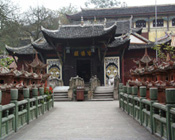 |
Fengdu
The town of Fengdu, known as the "Ghost City" and is a place for punishing the devil and awarding the good, is a very popular shore excursion site for tourists on the Yangtze River. The famous 'Ghost City' is deserving of a visit.
The origin of the town's extraordinary reputation can be traced back to the Han Dynasty (206 B.C. - 220 A.D.) when two officials, Yin and Wang, became Taoist recluses here and eventually Immortals. Later in the Tang Dynasty, their names were combined to mean "King of the Underworld". |
|
Fengjie(Baidi City)
The Baidi City lies in the eastern part of Fengjie, four kilometers away. Famous poets such as Libai, Dufu, Liu'yuxi, Luyou, Fan Dacheng have ever been here, so the Baidi City is well known as "the Poet City". There are two famous legends, one is "the seven hundred connected barracks were burned", and the other is "the orphan was put in trust in Baidi City", both of which make the Baidi City more famous. |
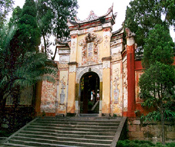 |
|
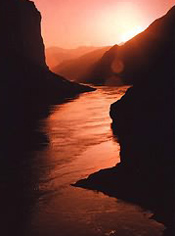 |
Qutang Gorge
Below The Baidi City you will enter Qutang Gorge, the first of the three gorges of the Yangtze River, and the one that is famous for its sheer and spectacular precipices. When you visit Qutang Gorge, you will find uniquely beautiful natural formations greeting you from every direction. In this section, the Yangtze River carves its way through the gorge between the sheer precipices that frame both sides of the river. Qutang's widest point is more than 150 meters (500 feet) and its narrowest point is about tens of meters. Two mountains, the Red Passage Mountain (Chijia Shan) to the north and the White Salt Mountain (Baiyan Shan) to the south, form the Kui Men entrance (Kui Gate). The steep precipices form a giant door where the tumultuous Yangtze bursts through in an exciting rush of rolling and roaring water. |
|
Wu Gorge
Wu Gorge is the most beautiful section of the Yangtze River, flanked by high peaks that are often capped by fog or clouds. The steep slopes of the gorge are green with trees and bushes. The gorge was long known to be as dangerous as it is beautiful. It was a dangerous place for boat navigators, who faced dangers including whirlpools, quicksand, and currents that varied from hour to hour. As the river cuts its way through the Wushan mountains, its roaring currents change their directions constantly.
|
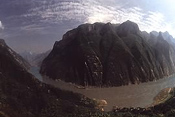 |
|
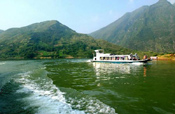 |
Wushan
Wushan, a town that is well known for its extraordinarily beautiful setting, looks both down the Wu Gorge and up the Daning River into the Three Little Gorges. The Three Litter Gorges, referring to the three separate valleys of the Daning River, are respectively, Dragon-Gate Gorge, Misty Gorge and Emerald Gorge. |
|
Shennong Stream
Shennong Stream, a tributary of the Yangtze River, rises in the southern part of the Shennongjia Natural Reserve. It joins the Yangtze at Xirangkou in Hubei's Badong County. With crystal clear water, this steam flows swiftly from north to south through deep gorges. A sampan tour will allow you to experience a high speed adventure along this newly opened unspoiled river. An arrow-like sampan glides through the four-kilometer-long Mianzhu Gorge and then enters the main stream of the Shennong. |
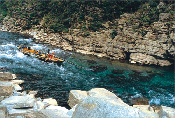 |
|
 |
Xiling Gorge
Comprising many dangerous rapids and currents, Xiling Gorge starts at Badong County and zigzags for 76 kilometers (47 miles) down to the Nanjin Pass in Yichang. It is the longest part of the Three Gorges system with dangerous rapids like Xietan, Qintan and Kongling, collectively known as the Three Rapids of Xiling.
The first rapid in Xiling Gorge - New Rapid (Xin Tan) - rushes over submerged rocks,the oily surface of the water churned by whirlpools . The swift current carries boats down river through Xin Tan at the rate of seven meters (30 feet) per second. It is a thrilling ride. |
|
Zigui
Zigui is located at the exit of Xiling Gorge, near which Xiangxi (Fragrant Stream) joins the Yangtze River. There erected a tomb and a memorial pavilion for Qu Yuan, a great patriotic poet in ancient China. One may take a dragon ship in the Fragrant Stream and see the native town of Wang Zhaojun, a famous beauty in ancient Chinese history. |
 |
|
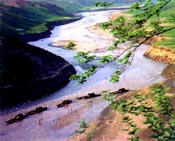 |
Lesser Three Gorges
Lesser Three gorges, made of Longmen Gorge, Bawu Gorge and Dicui Gorge, is 50 kilometers long. The river is very shallow, and the water is lucid. It is full of steep peaks. Its beauty is even superior to the Three gorges. The mini three gorges of Madu River, 5 kilometers long, is situated at the Madu riverside of the branch of Daning River. You may drift around the mini three gorges: Sancheng Gorge, Qinwang Gorge, Changtan Gorge. |
|
ShibaoZhai (Stone Treasure Stockade)
The wooden pagoda locates in Yuyin Mountain of the northern side of Yangtze River, 278 km apart from Chonqging city. The entire stronghold is composed by three parts namely the gate, boday and top ancient temple. The tower is made of wood with the height of 56 metres. Its architectural styles and surroudings make it looks like a heavenly building. The only way of access is through mountaineering. Viewing at the top of the tower, you will be moved by the endless river flow and the beautiful scenery within sight. |
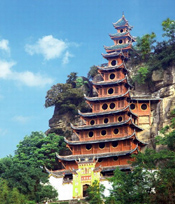 |
|
The Three Gorges Dam
The Three Gorges Dam, the largest water conservancy project ever under taken by human being is now being built at Sandouping in the middle of Xiling Gorge, the longest one among the famous Yangtze Three Gorges.
The Three Gorges Dam will be 2,335 meters long, 185 meters high, 18 meters wide on top and 130 meters wide at the bottom. The Dam will raise the river to a level of 175 meters above sea level, creating a 600-kilometer long reservoir with a storage capacity of 39.9 billion cubic meters extending from the dam-site all the way to Chongqing. 570,000 acres of farmland and towns and villages in 19 counties and cities will be flooded, causing 1.3 million people to be relocated.
The construction of the project will cost 230 billion Chinese Yuan, an equivalent of 28 billion US dollars. The purposes for building this huge dam are flood control, electricity, navigation and irrigation. The construction of the dam formally began under way in 1994. The first stage of the Three Gorges Dam project is scheduled for completion in 2003. Although the scenery will change along the Yangtze with the construction of Three Gorges Dam, new sites and scenery will be created. For example, a submarine museum will be built to preserve the inscriptions on the White Crane Ridge, and many historical sites will be moved to higher ground. After the dam is completed in 2009, ships will continue cruising the Yangtze River; passengers will then be passing through the largest national park in the world, which will be established upon completion of the dam. |
|
|
| Other City |
|
 |
| Private China Tours |
|
 |
|

